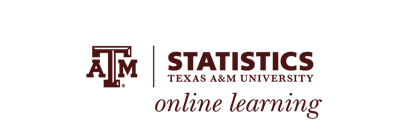Multivariate extensions of the chi-square and t-tests, discrimination and classification procedures. Applications to diagnostic problems in biological, medical, anthropological, and social research; multivariate analysis of variance, principal component and factor analysis, canonical correlations. Prerequisites: STAT 608 or 652. Credit 3.
Additional Information
Additional Information
The objective of this applied master’s level course is to introduce students to the Bayesian paradigm for data analysis. Students learn how uncertainty regarding parameters can be explicitly described as a posterior distribution which blends information from a sampling model and prior distribution. Students are exposed to foundational principles, but the course emphasizes modeling and computations under the Bayesian paradigm. Prerequisites: STAT 604, STAT 608 and STAT 630. Credit 3.
Additional Information
Additional Information
An application of the various disciplines in statistics to data analysis, introduction to statistical software; demonstration of interplay between probability models and statistical inference. Prerequisites: Two semesters of Calculus, STAT 604, and STAT 630.
Credit 3.
Additional Information
Credit 3.
Additional Information
Design and analysis of experiments; scientific method; graphical displays; analysis of non-conventional designs and experiments involving categorical data. Prerequisites: STAT 641. Credit 3.
Additional Information
Additional Information
Survey of crucial topics in biostatistics; application of regression in biostatistics;analysis of correlated data; logistic and Poisson regression for binary or count data; survival analysis for censored outcomes; design and analysis of clinical trials; sample size calculation by simulation; bootstrap techniques for assessing statistical significance; data analysis using R. Prerequisites: STAT 651, 652, and 659, or equivalent or prior approval of instructor. Credit 3.
Additional Information
Additional Information
An overview of relevant biological concepts and technologies of genomic/proteomic applications; methods to handle, visualize, analyze, and interpret genomic/proteomic data; exploratory data analysis for genomic/proteomic data; data preprocessing and normalization; hypotheses testing; classification and prediction techniques for using genomic/proteomic data to predict disease status. Prerequisites: STAT 604, 651, 652 or equivalent or prior approval of instructor.
Credit 3.
Additional Information
Credit 3.
Additional Information
Spatial correlation and its effects; spatial prediction (kriging); spatial regression; analysis of point patterns (tests for randomness and modelling patterns); subsampling methods for spatial data. Prerequisite: STAT 630 and STAT 608 or STAT 601 or equivalent. Credit 3.


See how Social we are!